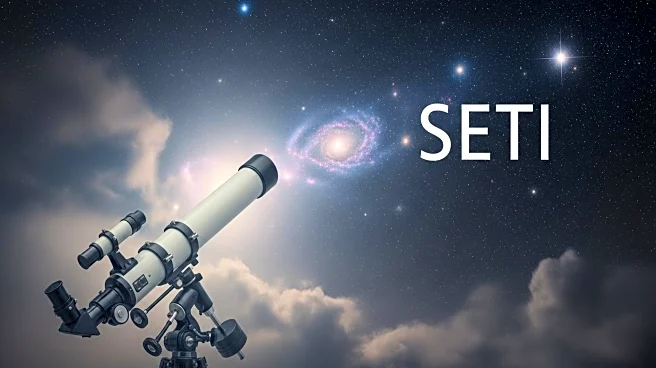What is the story about?
What's Happening?
On September 19, 1959, a pivotal paper titled 'Searching for Interstellar Communications' was published in Nature by Cornell University physicists Giuseppe Cocconi and Philip Morrison. The paper provided a scientific framework for the search for extraterrestrial intelligence (SETI), focusing on methodologies such as radio wave communication and potential transmission frequencies. This publication legitimized the SETI field, which had previously lacked credibility, and influenced Frank Drake to organize the first SETI conference in 1961. The concepts introduced in the paper have become standard practices within the SETI community.
Why It's Important?
The publication of Cocconi and Morrison's paper marked a turning point in the scientific pursuit of extraterrestrial intelligence, establishing SETI as a credible field of study. By proposing methodologies for detecting alien signals, the paper laid the groundwork for future research and exploration. The impact of this work is evident in the continued efforts to search for extraterrestrial life, influencing scientific priorities and funding. The paper's legacy persists in the ongoing development of technologies and strategies to detect alien civilizations.
Beyond the Headlines
The paper's influence extends beyond the scientific community, shaping cultural perceptions of the search for extraterrestrial life. It challenges humanity to consider the possibility of intelligent life beyond Earth and the implications of such a discovery. The work also highlights the importance of interdisciplinary collaboration in advancing scientific knowledge and exploring the unknown.
AI Generated Content
Do you find this article useful?
















